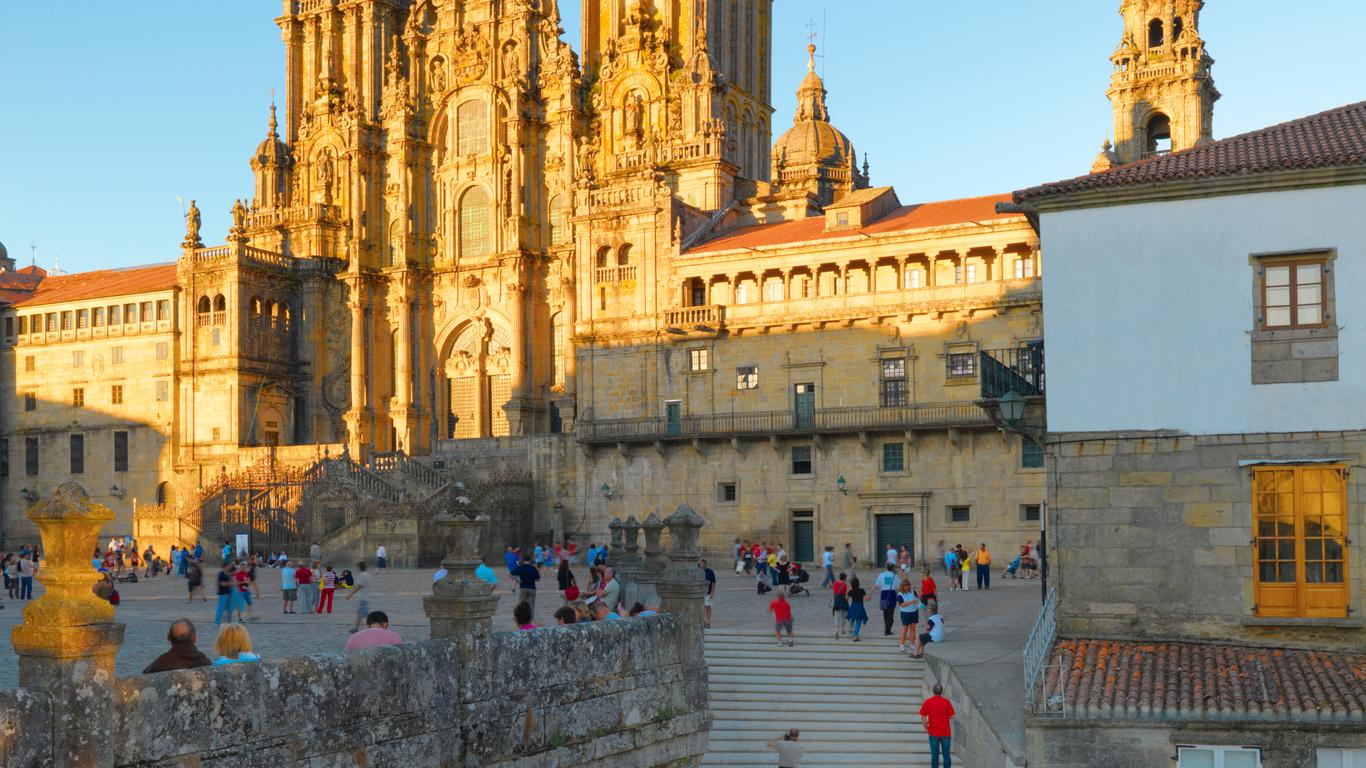Santiago de Compostela is the capital of Galicia, Spain located in the northwestern portion of the country and serving as the destination of the way of St. James. The city is most remarked for its containment of the prominent landmark Cathedral of Santiago de Compostela and designated UNESCO World Heritage Site. Santiago de Compostela houses nearly 100,000 residents and various cultural attractions making for an equally thriving tourist destination.
The Cathedral of Santiago de Compostela is the reigning area landmark, regarded as the burial site of Saint James the Great boasting an elegant exterior facade and intricate interior decorum. Other points of interest include the Pazo de Raxoi, which remains the city hall of the President, Baroque Abbey of San Martín Pinario and Colexiata de Santa María do Sar. In addition, the metropolitan area is sprinkled with adequate green space including multiple city parks making for pleasant urban views.
The Santiago de Compostela Airport is the predominant aviation hub for the region. There is also a rail service that links Santiago to Spanish High-Speed Railway Network which traverses many areas around the country. Walking and public buses are the most convenient forms of transit throughout the region.
The earliest record of the area dates back to the 4th century, recognised as a Roman cemetery. The Way of Saint James originated in the 9th century, a Catholic pilgrimage that attributes to the cultural significance of Santiago de Compostela to this day.





